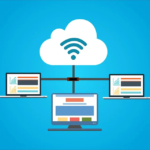The Unseen Threat: Unraveling the Intricacies of Secure Software Development
“The Unseen Threat” — it sounds like the title of a gripping thriller, doesn’t it? But, instead of a shadowy antagonist stalking through the pages of a novel, this unseen threat is real, lurking in the corners of code and architecture — it is the specter of insecure software development. So, let’s pull back the curtain and expose this hidden menace.
A Tale of Two Developers
Imagine two software developers. Both are brilliant. Both code like virtuosos. But one has a blind spot. Let’s call him Developer A. He’s obsessed with performance, scalability, features — all the flashy stuff. Security? That’s a distant afterthought.
Developer B, on the other hand, is equally obsessed with performance and features but has an ace up her sleeve — a keen understanding of secure software development.
Who do you think is playing the safer tune? Developer B, right? Now, let’s ask another question. How many of us are Developer A, and how many are Developer B?
The Imperative of Secure Software Development
In a world increasingly woven with code, secure software development isn’t just a nice to have. It’s a must. It’s as essential as the airbags in your car, the fire extinguisher in your kitchen.
With cyber threats surging like a tsunami, secure software development is no longer the underdog — it’s the superhero we need.
Take a moment. Think about the sheer volume of personal, financial, and critical information flowing through the veins of software systems. It’s staggering, isn’t it? And without secure development practices, it’s all up for grabs.
Let’s put it this way — if insecure software development is a leaky faucet, then data breaches are the flooding basement.
The Solution: A Stitch in Time
So, how do we become Developer B? How do we fortify our code against unseen threats? It’s simpler than you’d think. It’s about integrating security into every step of the development lifecycle. It’s about treating security as a first-class citizen, not a gate-crasher. It’s about proactive defense, not reactive patchwork.
For example, consider the art of binary scanning. The idea is simple — analyze binary files to identify potential security risks. But don’t be fooled by its simplicity. When implemented right, it’s a powerhouse of preemptive protection.
Let’s imagine you’re using the JFrog binary analysis tools to provide on-demand binary scanning. It’s not a magic wand, but it sure feels like one. It helps you catch vulnerabilities before they become full-blown crises, saving you from nightmarish “clean up in aisle 5” scenarios.
Unmasking the Threat
In the end, the unseen threat of insecure software development isn’t invisible — it’s just overlooked. And to combat it, we don’t need to become cybersecurity wizards. We just need to prioritize security, to weave it into the fabric of our development practices.
Because the truth is, we’re all Developers A sometimes. But we can — and should — strive to be Developer B.
So, let’s roll up our sleeves. Let’s dig into the intricacies of secure software development. Let’s unmask the unseen threat. Because when it comes to software security, ignorance isn’t bliss — it’s a ticking time bomb.
Are you ready to defuse it?
Changing the Software Development Culture
In the universe of software development, we often celebrate the heroes who save the day with last-minute bug fixes or new feature rollouts that users love.
Yet, how often do we cheer for the developer who prevented a security breach by adhering to secure software development practices? Rarely, if ever. That needs to change.
It’s About Mindset, Not Skillset
Secure software development isn’t so much about learning new skills as it is about adopting a new mindset. It’s about looking at your code and seeing more than just functions and loops. It’s about seeing potential gateways for malicious actors, understanding the value of the data flowing through these veins of code, and taking the necessary steps to safeguard it.
Developer B isn’t a different species of developer. She’s just a developer who’s woken up to the reality of today’s cyber-threat landscape. She’s a developer who’s realized that the software isn’t secure unless it’s developed securely from the ground up.
The Secure Software Development Life Cycle: Your New Best Friend
When it comes to secure software development, one framework stands out: the Secure Software Development Life Cycle (SSDLC). It’s a roadmap to security, charting the course from requirements gathering to deployment and maintenance.
The SSDLC isn’t a magic pill. It’s a journey, a commitment to building security into every stage of software development. It’s about making security an inherent aspect of your coding culture, not a band-aid solution.
It’s about moving from the reactive (“Oh no, a security breach!”) to the proactive (“Let’s prevent security breaches in the first place”). It’s about building fortresses, not cleaning up ruins.
Security is a Team Sport
Secure software development isn’t a solo effort. It’s a team sport. It involves everyone from the developers to the testers, from the project managers to the clients. Everyone needs to be on the same page, understanding the importance of security and the role they play in ensuring it.
Remember JFrog CLI? It’s not just a tool for developers. It’s a tool for the entire team, offering a shared understanding of the software’s security posture. It bridges the gap between different roles, fostering a culture of shared responsibility for security.
The Future is Secure
As we step into the future, let’s not forget the lessons of the past. Let’s not be Developer A, rushing headlong into the next shiny feature without a thought for security. Let’s be Developer B, balancing the need for innovation with the imperative of security.
The unseen threat of insecure software development isn’t insurmountable. It’s just waiting to be recognized, understood, and addressed. So, let’s rise to the challenge. Let’s weave security into the DNA of our development practices.
The future of software development isn’t just fast, scalable, or feature-rich. It’s secure. And it’s up to us to make it happen. Are you ready?











